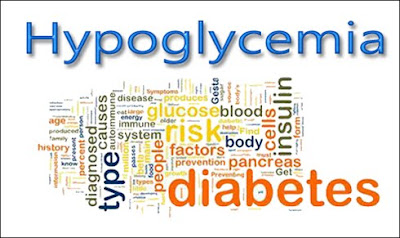Diet for the Hypoglycemics
Diet for the Hypoglycemics - Hypoglycemia Hypoglycemia is a condition in which there is an abnormally low level of glucose (sugar) in the blood. As a result, the pancreas will secrete higher levels of insulin to make up for it. Some symptoms of hypoglycemia are: fatigue, dizziness, light-headedness, headache, irritability, fainting spells, depression, anxiety, cravings for sweets, confusion, night sweats, constant hunger, etc., etc.. (sound like anyone you know : ) It sounds like everyone I know! I am convinced that if you do not have diabetes, you have (to a certain degree) hypoglycemia.
Hypoglycemia is a pre-cursor to diabetes. I feel the reason for this problem is largely due to poor dietary habits that include eating large amounts of simple carbohydrates, sugars, caffeine, and soft drinks. And, not enough complex carbohydrates.... fruits, veggies, whole-grains, etc. You need to get it under control before it becomes a more serious problem. And, I know from personal experience that it is possible to bring it under control with the right diet and some helpful supplements.


Diet for Hypoglycemics BREAKFAST A Choice of one of the following: oatmeal or other cooked whole grain cereal - use butter and small amount of honey if desired cold cereal, regular granola -use fruit juice (avoid milk) or eat dry fresh fruit can be substituted for the above, but avoid if this results in a low blood sugar swing LUNCH raw vegetables: as in a large vegetable salad (this should comprise the majority of the meal)steamed vegetables: freshly steamed (from raw or frozen), avoid canned or "cooked to death" vegetables May add one of the following carbohydrate choices: -baked potato -baked yam or sweet potato -brown or wild rice -corn -whole grain bread (one or two slices, or 2 rolls) -whole grain pasta -avocado (avocado sandwich acceptable) SUPPER raw vegetables: as in a raw vegetable salad or finger salad steamed vegetables: make sure to keep some crunch in them may add one of the following protein choices -nuts (1-2 oz. raw) -avocado -fish, chicken or turkey (baked or grilled, avoid breaded and fried) -no beef, pork, mutton Note:If you do not desire a protein choice for supper, then make a choice from the carbohydrate list above.
Likewise, if you prefer a protein choice for lunch, then make a choice from the protein list. It is best not to have a protein and a carbohydrate choice in the same meal. It is best to have only one protein meal per day. However, you must have a protein meal at least every other day.
SNACKS
It is important to snack between meals. You must do this, even if you think you're not hungry. Snack as often as you like, just don't eat too much per snack. It is better to eat small amounts all day long. Snack choices include: fresh fruit vegetable sticks raw nuts (one handful per snack) whole grain crackers with butter salt-free rice cakes with butter dried fruit (from health food store)
OTHER INSTRUCTIONS
Absolutely avoid the following: -white flour (breads and pasta) -sugar -caffeine Try to avoid: -salt -processed foods containing a lot of chemicals, preservatives, coloring, etc.. Drink Pure Water -have all the distilled or reverse osmosis water you want (drink to thirst, don't force water) Health Food Store Juices -these are acceptable for a thirst quencher, not for nutrition Fresh Juices -one or two glasses of fresh vegetable or fruit juices is an excellent choice if a juicer is available. If you will follow this diet correctly, your hypoglycemia will be improved or entirely eliminated from your life.


Komentar
Posting Komentar